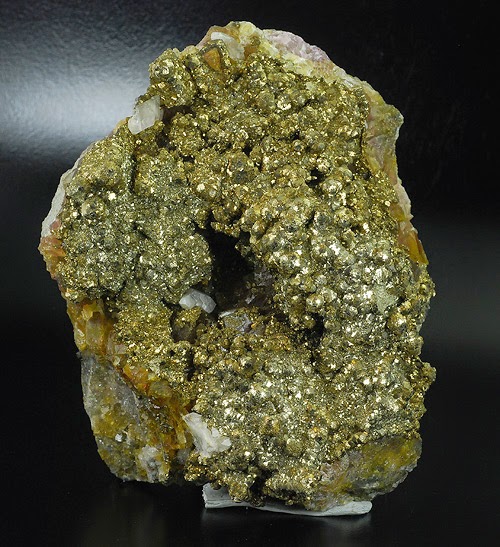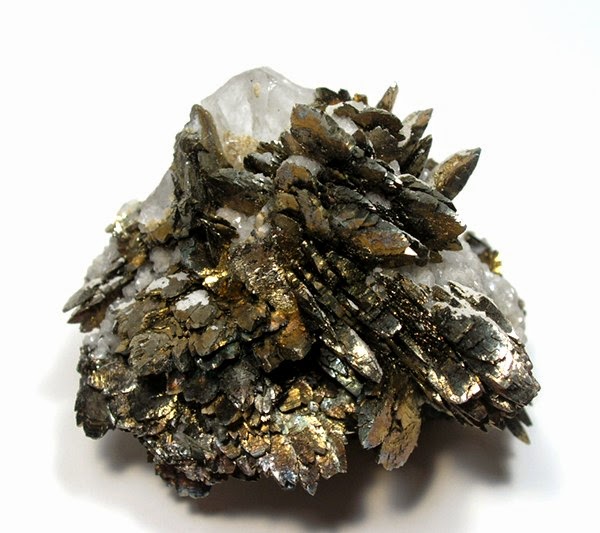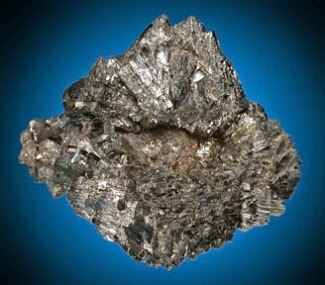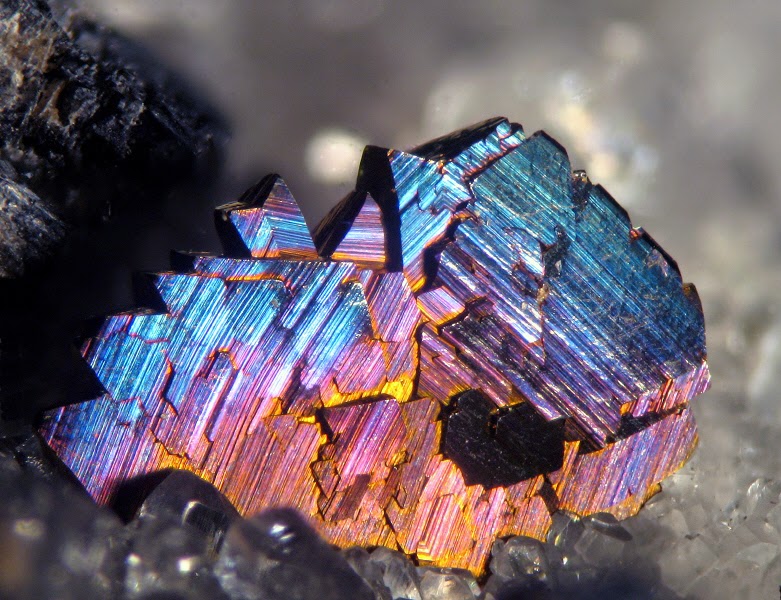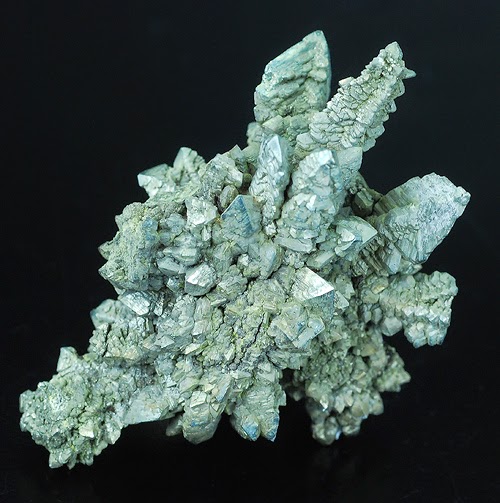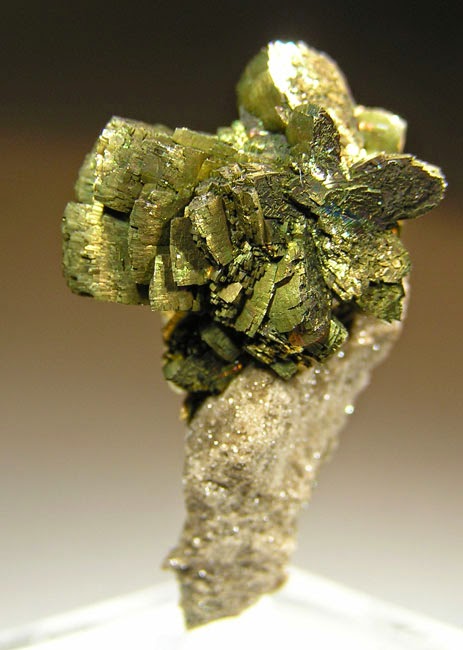
Chemical Formula: FeS2
Locality: Common world wide.
Name Origin: Arabic or Moorish name for pyrites and similar material of uncertain origin.
The mineral marcasite, sometimes called white iron pyrite, is iron sulfide (FeS2) with orthorhombic crystal structure. It is physically and crystallographically distinct from pyrite, which is iron sulfide with cubic crystal structure. Both structures do have in common that they contain the disulfide S22- ion having a short bonding distance between the sulfur atoms.
The structures differ in how these di-anions are arranged around the Fe2+ cations. Marcasite is lighter and more brittle than pyrite. Specimens of marcasite often crumble and break up due to the unstable crystal structure.
On fresh surfaces it is pale yellow to almost white and has a bright metallic luster. It tarnishes to a yellowish or brownish color and gives a black streak. It is a brittle material that cannot be scratched with a knife. The thin, flat, tabular crystals, when joined in groups, are called “cockscombs.”
In marcasite jewellery, pyrite used as a gemstone is termed “marcasite”. That is, marcasite jewellery is made from pyrite not from marcasite. In the late medieval and early modern eras the word “marcasite” meant both pyrite and marcasite (and iron sulfides in general). The narrower, modern scientific definition for marcasite as orthorhombic iron sulfide dates from 1845. The jewellery sense for the word pre-dates this 1845 scientific redefinition. Marcasite in the scientific sense is not used as a gem due to its brittleness.
Occurrence
Marcasite can be formed as both a primary or a secondary mineral. It typically forms under low-temperature highly acidic conditions. It occurs in sedimentary rocks (shales, limestones and low grade coals) as well as in low temperature hydrothermal veins. Commonly associated minerals include pyrite, pyrrhotite, galena, sphalerite, fluorite, dolomite and calcite.
As a primary mineral it forms nodules, concretions and crystals in a variety of sedimentary rock, such as at Dover, Kent, England, where it forms as sharp individual crystals and crystal groups, and nodules (similar to those shown here) in chalk.
As a secondary mineral it forms by chemical alteration of a primary mineral such as pyrrhotite or chalcopyrite.
History
Discovery date : 1845
Optical properties
Optical and misc. Properties : Opaque
Reflective Power : 49,1-54,1% (580)
Physical Properties
Cleavage: {010} Indistinct
Color: Bronze, Light brass yellow, Tin white.
Density: 4.89
Diaphaneity: Opaque
Fracture: Uneven – Flat surfaces (not cleavage) fractured in an uneven pattern.
Hardness: 6-6.5 – Orthoclase-Pyrite
Luminescence: Non-fluorescent.
Luster: Metallic
Magnetism: Magnetic after heating
Streak: gray brownish black
Photos :
